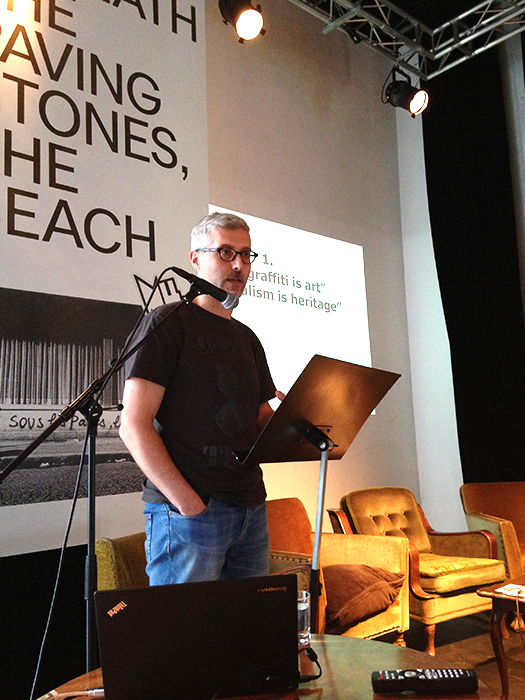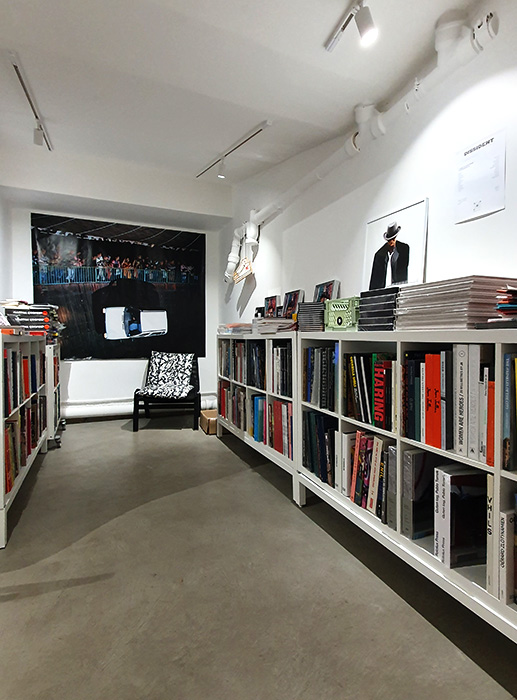Originally from Rome, but living in Paris since 2004, Christian Omodeo runs an independent bookshop specializing in street cultures called “Le Grand Jeu.” Simultaneously, he curates exhibitions dedicated to the world of graffiti and street art, such as the one that opened on December 6th 2023 at the Grand Palais Immersif in Paris.
“Loading: Street Art in the Digital Age” is an immersive exhibition that delves into the role of technologies in the global evolution of urban art. Through digital representations of graffiti pieces created by over a hundred artists, you’ll discover how the interplay between the tangible and digital worlds impacts this dynamic art movement.
“In the first room, which we call “The Cathedral” due to its expansive 400 square meters and 25-meter in height, we’ll showcase a film montage spanning decades of urban art, with a focus on New York’s vibrant ’70s and ’80s scene. Then, we shift the spotlight to recent productions, given that technical limitations prevent us from using videos produced in the 2000s due to their low resolution. This collection of video snippets from diverse sources, effectively forming an art documentary itself, will be projected onto a vast space with a 30-meter-wide main wall and 13-meter side walls, all reaching a height of 12 meters. It’s more than just a cinema; it’s an immersive experience.”
Christian Omodeo
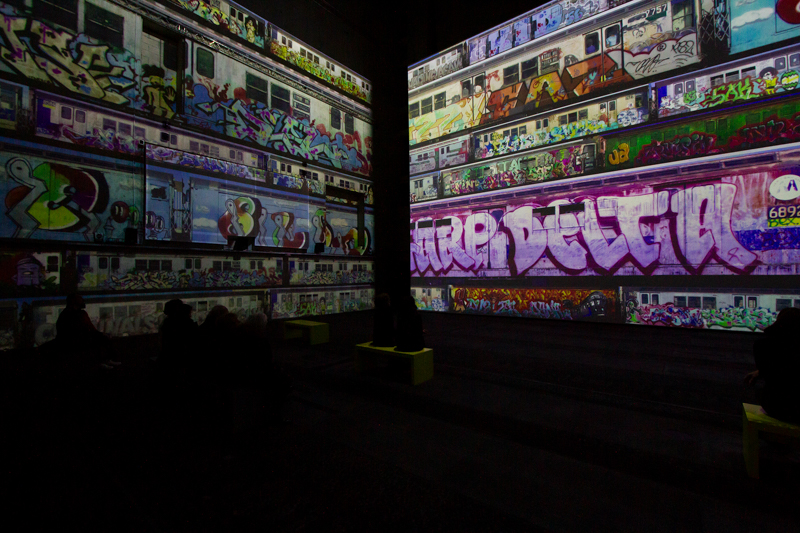
The primary purpose of this exhibition is to convey to a broader audience the dynamic shift in the world of street art today. When an artist creates a piece in a public space, they are now engaging with two distinct audiences. One is the passerby who stumbles upon the artwork in the physical world, walking past it. The other, a far larger audience, views the same piece through photos and videos specifically crafted for sharing on social media and the internet.
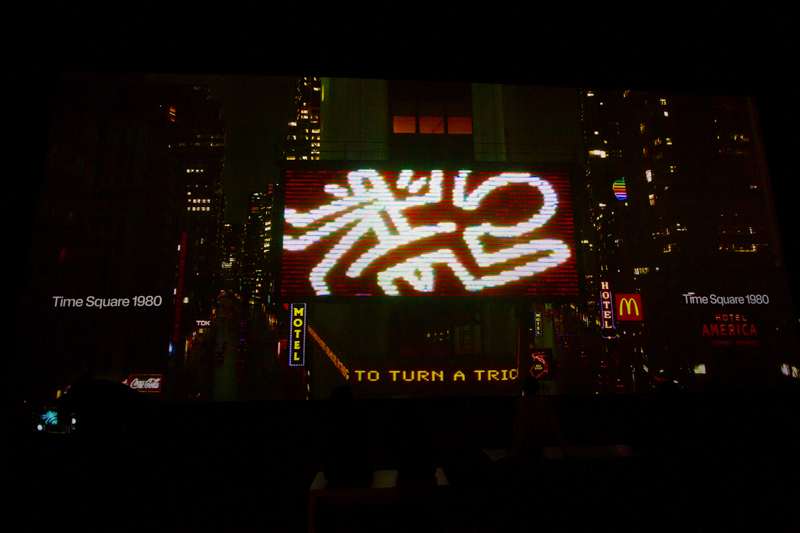
Increasingly, artists are directing their primary focus towards the online audience. From massive rooftop creations only fully appreciated through drone-captured footage to works hidden in abandoned factories and remote yet captivating locations, there’s a growing trend among street artists to craft their pieces with an online viewership in mind, rather than the traditional pedestrian audience.
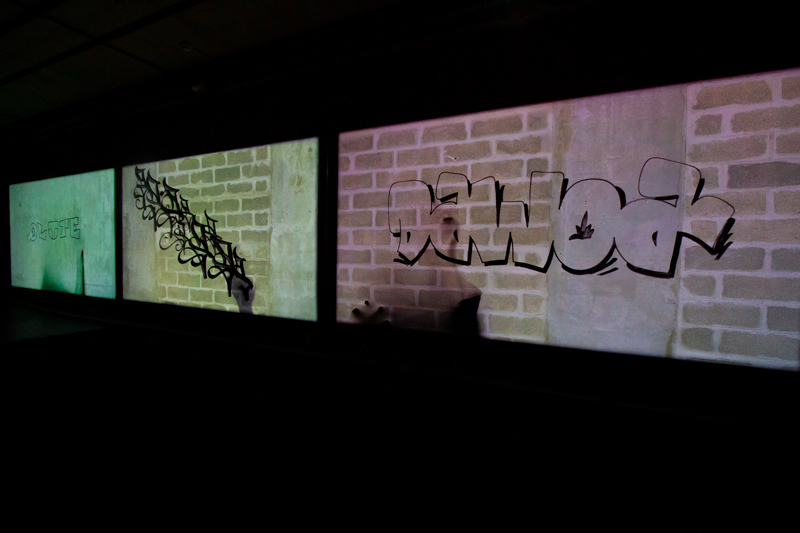
A prime example of this phenomenon is INSA, a British graffiti artist and designer. Starting in the early 2000s, INSA pioneered “GIF-ITI,” a unique form of animated graffiti known for combining traditional techniques with digital innovation. These mesmerizing animated pieces are best experienced online as GIFs, standing out as weird and out-of-place when encountered on the streets.

In a similar vein to GIF-ITI, where the graffiti is designed to be captured in multiple stages, each representing a distinct frame of animation, the immersive exhibition “Loading: Street Art in the Digital Age” will showcase graffiti transforming right before visitors’ eyes, unveiling a different piece in a captivating and ever-evolving display.
“There will be rooms dedicated to graffiti pieces by various artists. We’ve taken photos of real-world graffiti and transformed them into something resembling GIF-ITI, inspired by INSA. These graffiti pieces will be projected onto concrete walls, appearing gradually as if an artist were painting them. The artist isn’t present, though, and you’ll watch the piece evolve before your eyes. The artwork eventually fades, and a different piece emerges through morphing. Technically, it’s a projection, but the immersive experience differs significantly from a traditional cinema screening.”
Christian Omodeo
For this exhibition, Christian Omodeo embarked on an in-depth analysis of the profound impact of technology on urban art over time -from the advent of computers in the 1980s, to how video games have shaped the creativity and imagination of artists in this scene. The exploration continues to examine the influence of smartphones, social media, and the internet on artists in the past two decades.
“Living on the fringes of the contemporary art market, street artists have had to rely on social media to build their own community. Banksy himself forged the path we know today, largely because he had the opportunity to go viral on the internet. Banksy was one of the first artists to grasp the importance of virality in the early 2000s. The internet influenced his modus operandi, as it is evident today that he made specific choices at certain times to enable interventions that would attain the virality he needed to create a community of followers who supported him, both financially by purchasing his early prints and by forwarding and sharing the content created by Banksy. In this way, the online audience allowed Banksy to become the iconic artist we recognize today. Without the internet, Banksy would not have achieved the level of iconic status attributed to him now.”
Christian Omodeo
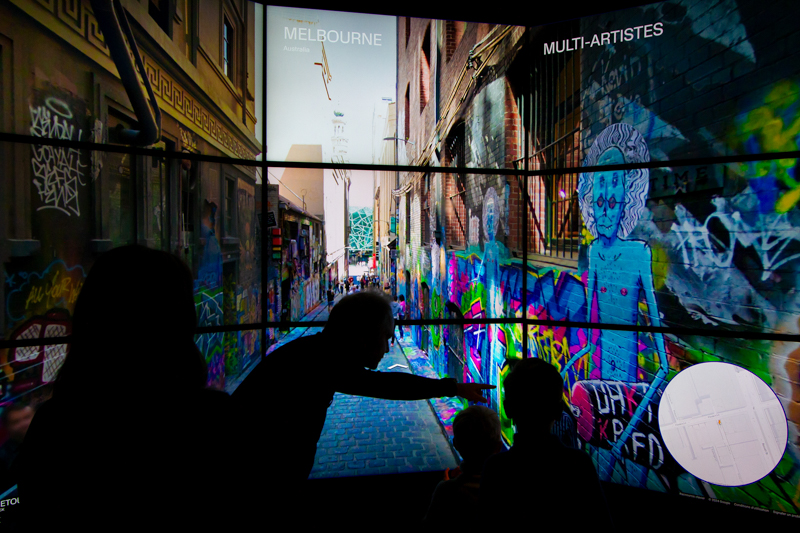
Christian Omodeo wholeheartedly embraced the digital medium because he recognized that these devices allow for an exhibition on urban art that focuses solely and exclusively on street production. If you need to organize a ‘typical’ exhibition in a ‘conventional’ museum setting, as a curator, you can’t escape the need for a physical production consisting of paintings, sculptures, toys, screen prints, drawings, and more. These tangible objects are essential for constructing a narrative around urban art in a ‘typical’ museum setting, and even when curators include photos and videos documenting the actual work in the streets, the audience tends to give less significance to those, as their primary attention is captured by paintings and sculptures, which closely resembles what they are accustomed to seeing in museums.
“When you no longer require physical works because you build your narrative based on digital imagery, everything becomes possible. You can work with images produced by others, assembling them into a kind of documentary, or you can take images created by artists through photographs, videos, or even entirely new digital creations to craft immersive experiences that convey what urban art is, all without showcasing physical objects like paintings or sculptures, which are meant for the art market in the first place. This, for me, is essential. Moreover, it allows me to show the audience what they don’t typically see – the ‘making-of,’ what it means to paint a 20-meter-high façade from a cherry picker with your nose against the wall, yet still manage to complete it with astonishing speed. With this medium, I can expose visitors to the experiences they rarely witness – the act of painting, the act of being a vandal in public space, the act of reclaiming public space as an artist. In a traditional exhibition, these aspects are seldom featured prominently, while here, they form the core essence of the exhibition.”
Christian Omodeo
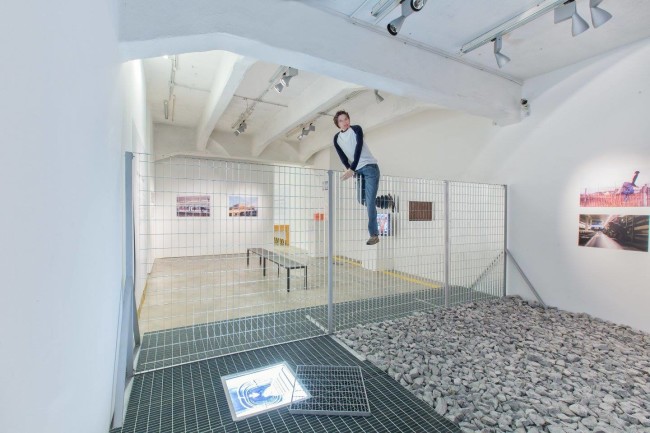
Once more, following his involvement in exhibitions like “Banksy & Co.” in Bologna (2016), “Cross the Streets” in Rome (2017), and “Rammellzee: Racing for Thunder” in New York (2018), Christian Omodeo assumes the role of a Vandal Curator, a term he coined for himself during a conference at the Nuart Festival in Stavanger in 2016 (which, BTW, marked the occasion when we first met in person). From an interview subsequently given by Christian Omodeo to the Nuart team and published in the Nuart Journal:
“For me, being a vandal [curator] is not just about rule breaking. It’s about changing the rules of museum policies. If you consider that street art is a game changer phenomenon, you cannot use old algorithms. You have to find new rules for working with museums. […] We need to educate the art institutions about our rules and not just play by their rules.”
Nuart Journal, VOL. 1, NUM. 2
In the case of “Loading: Street Art in the Digital Age,” Christian Omodeo assumed the role of a Vandal Curator by seamlessly integrating into an exhibition meant for the general public artists who paint trains and walls but are often left out of urban art exhibitions because they don’t create traditional paintings (or sculpture, prints, toys, drawings and other works aligned with the ‘suitable’ art medium).
Instead of focusing on that small group of street artists who have managed to establish themselves in the contemporary art market, Christian, using a groundbreaking approach, can finally present a 360-degree view of urban art, quite literally.
This exhibition zeros in on what happens on the streets, providing a glimpse of artists in action rather than just showcasing their finished works. It also opens the door to include artists with strong street credibility who were previously excluded from urban art exhibitions because they hadn’t developed gallery-oriented productions.
It’s no surprise that Christian Omodeo is producing a groundbreaking exhibition, one that promises to challenge the conventional ways cultural institutions display urban art and push the boundaries of graffiti and street art in the digital era. For decades, Christian has been a trailblazer in the urban art scene, a journey that began back in the 2000s when he joined NuFactory, a Rome-based company instrumental in organizing Rome’s first mural festival, the Outdoor Festival, in 2010. This visionary event drew inspiration from Christian’s firsthand encounters with urban art in the bustling streets of Paris, where he pursued a PhD in Art History at La Sorbonne.
Moreover, in 2015 Christian established Le Grand Jeu, initially as a company specializing in curating exhibitions. Later, the focus shifted towards books, magazines, and fanzines, delving into various facets of street culture.
“Le Grand Jeu emerged from the fact that, alongside my more traditional research subjects as an art historian, I nurtured my passion for countercultures. Eventually, in 2012, I decided to leave full-time academic teaching and create Le Grand Jeu. Initially, I envisioned using Le Grand Jeu to develop a fairly conventional curatorial practice, involving exhibitions. However, the project gradually evolved into a specialized bookstore in street cultures. In order to work as a curator, I had built my own library. My passion for books and knowledge about phenomena like graffiti and street art resulted in a continuous stream of requests for reading recommendations and inquiries about where to find certain books or magazines. Given the substantial number of requests, I realized that I could continue curatorial work, not by curating exhibitions and artists, but by curating a vast editorial production. Today, this allows me to provide a far more objective representation of the scene. Rather than selecting ten, twenty, or even a hundred artists for an exhibition, I can curate a selection of 1000, 2000, or even 5000 titles that better represent the scene.”
Christian Omodeo
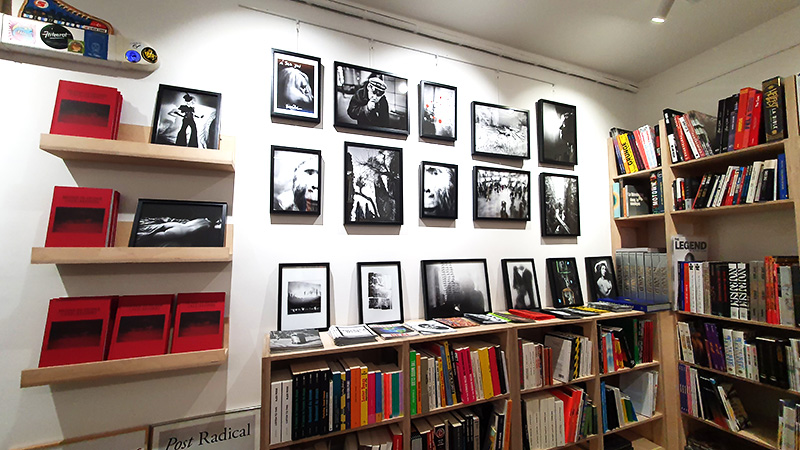
Le Grand Jeu had enjoyed online success for several years, and in 2018, it found a physical location in the Menilmontant neighborhood of Paris. However, this space primarily served as Christian’s office, rather than a conventional bookstore. While visitors did purchase books, most came to meet with Christian.
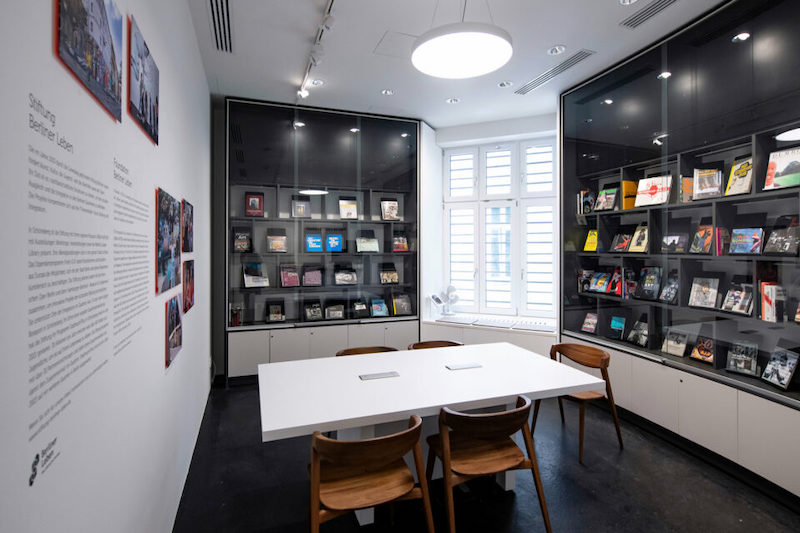
In 2019, Christian was invited to manage the bookstore at Fluctuart, an urban art museum in Paris. This experience solidified his desire for a dedicated physical bookstore in his open-to-the-public office. Over the past two years, this project has demanded intensive effort, and it’s not yet fully completed. Christian explains that when you and I will visit Le Grand Jeu in January 2024, some furniture may still be on its way, but at that point, the “new” bookstore will be very close to completion.
As ‘LOADING’ unfolds, not only as an immersive exhibition but also as a step forward in transforming Le Grand Jeu into a real-world haven for street culture, I’m looking forward to catching up with Christian in his new bookshop.
The progression of the digital ‘LOADING’ bar signals the imminent launch of the physical bookshop phase. However, this isn’t just an endpoint; it marks a new beginning. With the forthcoming launch of the new website and blog, I’m looking forward to the next chapter in Christian’s inspiring journey, one that will undoubtedly be ‘fully loaded’ with creativity and an unwavering passion for street culture.
My impressions after visiting the immersive show “Loading: Street Art in the Digital Age” at Grand Palais Immersif in Paris.
At last, I visited the immersive exhibition “Loading: Street Art in the Digital Age” at Paris’ Grand Palais Immersif. This show is a revolutionary take on urban art, breaking free from traditional canvas boundaries to envelop viewers in a 360-degree artistic experience. The exhibition’s use of supersized video projections instills a sense of movement, action, and adrenaline, distinctly contrasting with static canvas works and other classic mediums such as prints or sculptures, which are the norm in art shows, even in those aiming at showcasing art from the streets.
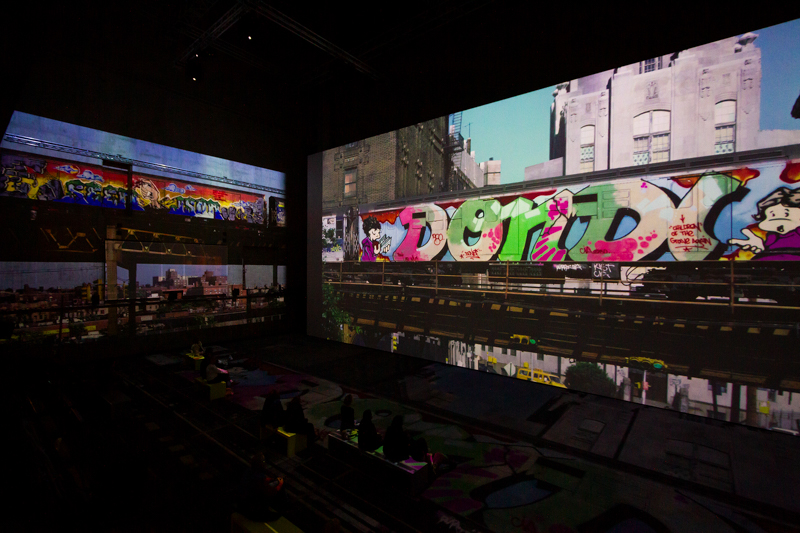
The evolution of urban art parallels the world it inhabits, with a significant shift towards digital platforms. Renowned Parisian street artist JR once referred to the streets as “the world’s biggest gallery,” but today, the web claims this title. This exhibition adeptly highlights the digital revolution in urban art, capturing the current landscape right before the imminent, transformative wave brought by NFTs and AI. It presents a snapshot of a pivotal moment, illustrating how far digital influences have shaped urban art and anticipating the seismic shifts yet to come.
For me, a fascinating aspect of the show was the photography selection, featuring outstanding works not only from icons like Martha Cooper and Henry Chalfant, known for their legendary “Subway Art” graffiti photography book, but also from contemporary talents like Alex Fakso, Edward Nightingale, Zane Meyer, Selina Miles, Jules Césure, and Kristina Borhes.
The exhibition also explores digital-inspired aesthetics. It presents installations that blend internet codes with real-world elements, like Biancoshock’s works in Civitacampomarano for the CVTà street fest, BLU’s timelapses, augmented reality pieces, and drone-only viewable creations like EllaPitr’s floor murals, the 1UP’s ship, and Saype’s “Beyond Walls” project, up to the popular app by Invader, which transforms walking around a city into a video game experience.
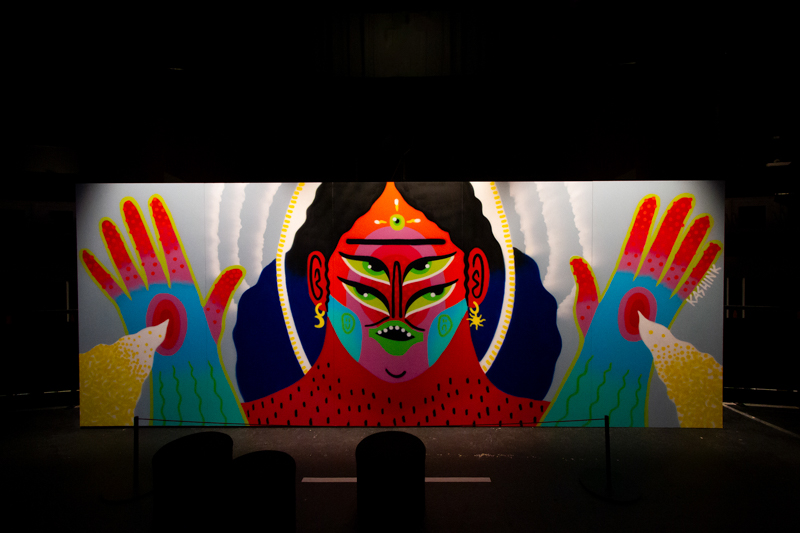
The selection of Kashink as the “testimonial” for the exhibition initially surprised me, as she isn’t an artist typically linked with digital art. Yet, upon reflection, it became clear why she fits perfectly into this digital narrative. Kashink’s work emphasizes the act of painting as a performance, treating the artist’s body as an integral tool of creative expression. In an era where digital mediums are paramount, the documentation and sharing of such artistic performances are predominantly through video, a medium well-represented in this exhibition. Her inclusion underscores the symbiotic relationship between traditional artistry and digital platforms, enriching the narrative of “Loading: Street Art in the Digital Age.”
In conclusion, “Loading: Street Art in the Digital Age” is an insightful, boundary-pushing exhibition that captures the dynamic intersection of urban art and digital innovation. Wrapping up this review (which I’d like to keep short, since many things have already emerged in my interview with curator Christian Omodeo), I can only urge you to experience this immersive journey at the Grand Palais Immersif.
“Loading: Street Art in the Digital Age”: An Exhibition by Christian Omodeo
- “Loading: Street Art in the Digital Age” @ Paris’ Grand Palais Immersif from December 6th 2023 to July 21st 2024.
